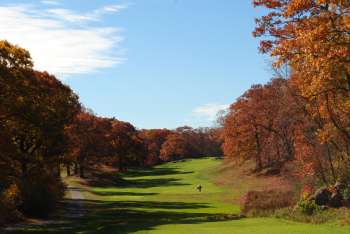Building the Course
In the late 1920’s a group of citizens in Boston came into the control of the Grew estate in the Hyde Park section of Boston. Their intent was to have the City of Boston build a golf course that would actually be a private club. The legendary Donald Ross was commissioned to design the course and when the market crashed in 1929, the project was abandoned.
In 1932, Walter Irving Johnson, who had worked for years as an Associate of Donald Ross, took on the project as an engineer for the MDC. George Wright became one of the great feats of engineering and building in the annals of golf. Before completion, 60,000 pounds of dynamite were used to excavate the ledge, 72,000 cubic yards of dirt were spread to raise the ground above the swamp level and 57,000 linear feet of drainage pipe were laid to drain the property. The WPA provided the funds to build the course, estimated at $ 1,000,000 by completion in 1938. At one time, it was estimated that 1,000 men worked on the project.
By completion, George Wright Golf Course sported a full sized 18-hole golf course as well as a six-foot rock wall that encircled the entire 156-acre site. In addition, a Norman-style clubhouse of mammoth proportion was constructed at a cost of $ 200,000.
Extract from the golf course website
In 2021 GOLF Magazine published the following description of the course;
A WPA project in the late 1930s, this course thankfully came deep in Ross’s career, because it is hard to fathom that he would have had the ability to design so many outstanding holes on this rocky site if he had just arrived from Scotland where all he knew was sandy soil. Fast-forward 35-plus years, though, and Ross and his team, led by Walter Hatch, had developed the skill set to employ dynamite to render holes that make the site look as if it was always meant for golf. Standout stretches of par-4s include 5 though 7, as well as 10 through 12. With no weak links, this municipal course is better than most of the private courses in golf-rich Massachusetts.
 this course also has exceptional:
this course also has exceptional:
